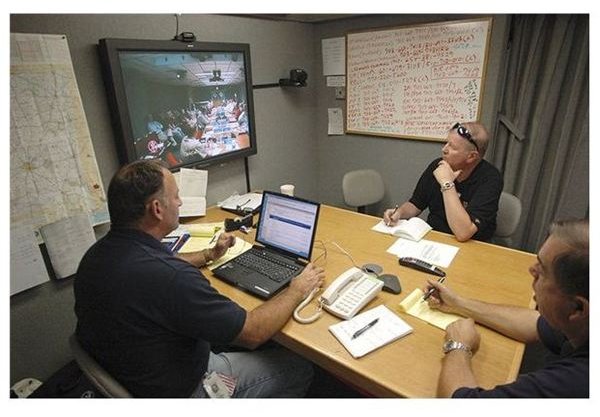What Are the Protocols for Hosting a Video Conference?
Purpose of the Video Conference
Before you put a video conference into action, ask yourself, what is the purpose of the conference? Do you need all of the people involved? Can the conference be better served by just two people who need to discuss the issues? On the other hand, having multiple participants may be essential, then you have to ask are the right people going to attend the conference? All of these protocols for hosting a video conference are important to consider.
Usually a conference involving multiple people means that input is expected and wanted. Sometimes a meeting is to explain a new policy so it may be a unidirectional conference. But in either case, the purpose of the conference must be well defined.
Holding the Conference: The Appropriate Time Setting
Once you have decided on a topic and who will attend, it is important to pick a day and time for the conference to be held. It is also important to give advance notice of the time and place that the conference will be held. If insufficient notice is given, then attendance may be lacking. If the conference is planned too far in advance, you run the risk of it being forgotten. An appropriate time frame should be in place.
In Place Infrastructure
Before you can have a video conference, you have to have certain physical elements present, such as a well lit room that will serve as the central point of the meeting. If a white board is needed, it should be present in order to make the presentation of discussion easy to understand. This goes for other physical elements. Microphones and cameras should be tested before the meeting to verify that there will a smooth operation before the meeting takes place.
Audio and Video Bandwidth Connectivity
It is important to test the audio and video bandwidth connectivity. The important feature is that the bandwidth must be high enough for smooth audio and video streaming to occur. Choppy, broken connections, or connections that are inconsistent will undermine the nature of the business, because instead of talking about the nature of the video conference, people will wonder about the technology instead.
Relevant Documents
Relevant documents should be in place before the video conference starts. All prospective attendees should have access to the same information that will be discussed. The video conference presenter should make available reports, graphs, documents, computer files, PowerPoint presentations, and any software that would make the presentation or video conference accessible.
Conference Etiquette
Etiquette by all involved should be a standard procedure. Rude behavior should not be tolerated. The video conference organizer should send out a short memo beforehand explaining what is and is not acceptable. For instance, asking a question should start with identifying the person, and then asking or making the remark. They should not cut off anyone who is talking or making a presentation.
Everyone should introduce themselves and where they are located at the beginning of the conference.
Source
https://www.tandberg.com/collateral/white_papers/whitepaper_Videoconferencing_standards.pdf
https://www.aarnet.edu.au/library/Guide-to-Protocol-for-Video-Conference-Meetings.pdf
Purpose of the Video Conference
FEMA, Image, Public Domain License use,
https://commons.wikimedia.org/wiki/File:FEMA_-_14685_-_Photograph_by_Leif_Skoogfors_taken_on_09-04-2005_in_Mississippi.jpg
